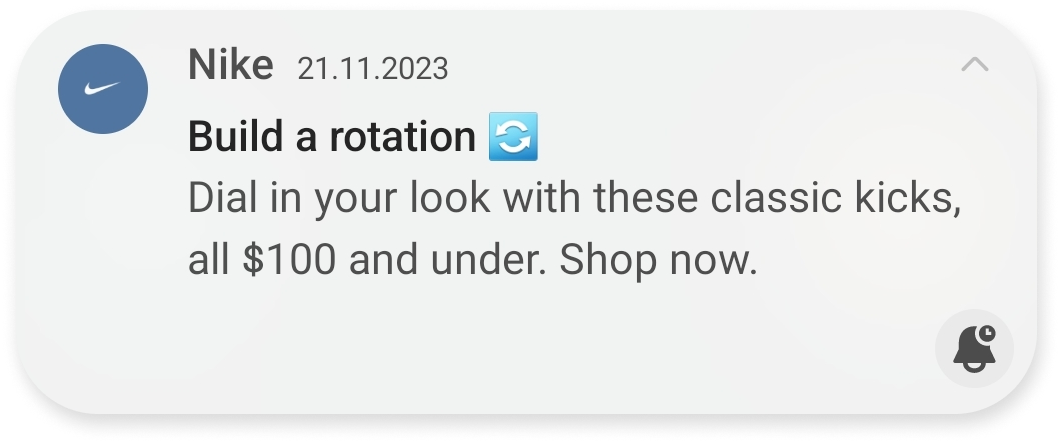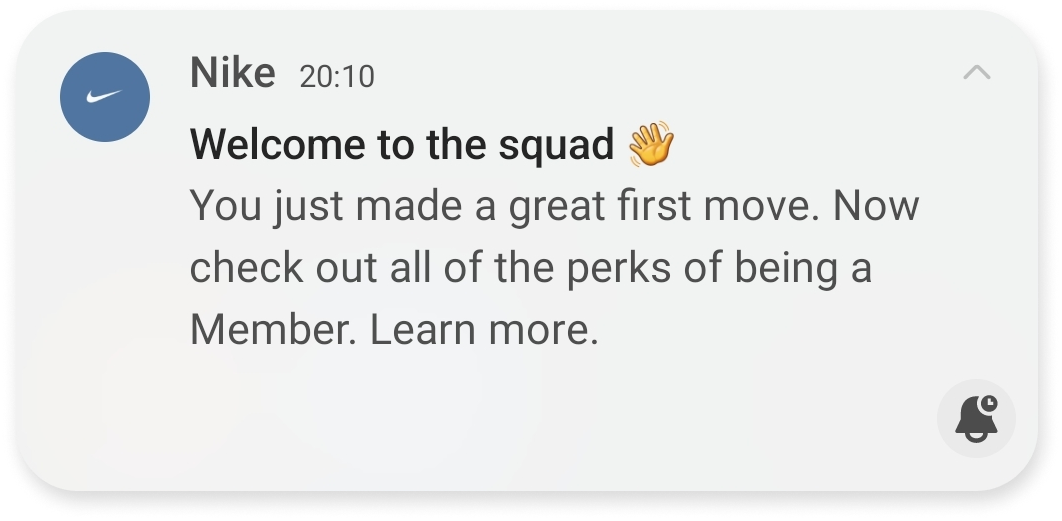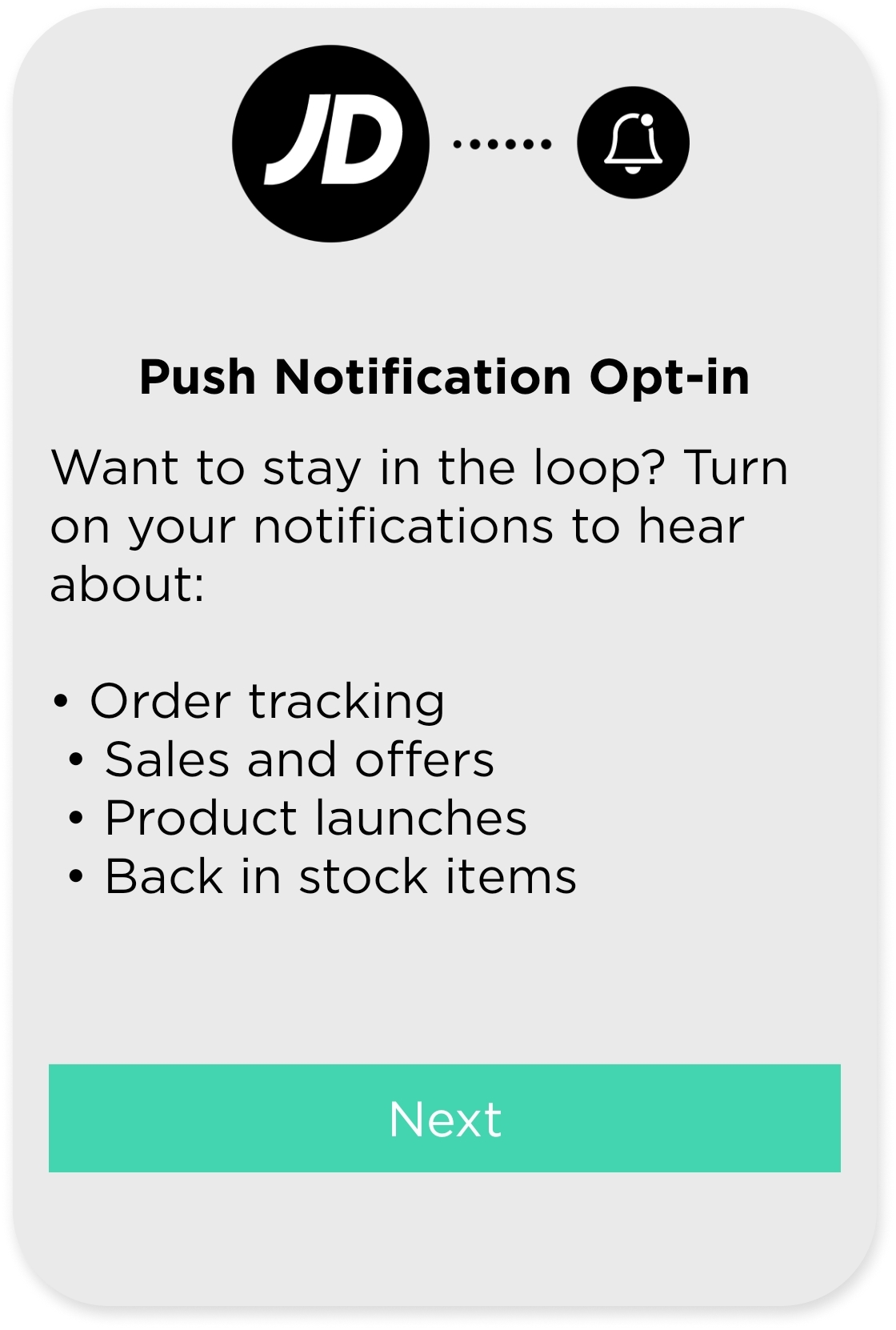Being a marketer, you have a lot on your plate. You’re trying to employ a variety of tools and coordinate with other specialists to improve business performance across a number of crucial indices including brand awareness, user engagement, user retention, and ultimately sales. The sheer extent of options you can explore to achieve your goals can be exciting and daunting at the same time. A number of industries like ecommerce, finance, healthcare, or travel put plenty of effort into developing mobile apps which are an excellent way to capitalize on the growing popularity of the mobile channel for sales. To stay in touch with customers even when they’re not logged in, consider including Push Notifications in your marketing strategy. Here’s what you should know.
In this article we discuss:
The technological framework behind mobile Push Notifications.
The benefits of Push Notifications and what they can be used for.
Measuring the performance of Push Notification campaigns.
A practical step by step guide to getting started with effective Push Notification marketing.
Understanding how mobile app Push Notifications work
If you’re perhaps only just getting started with Push messages, it may be a good time to better understand the mechanisms driving their delivery. The specifics of how mobile Pushes work differ slightly across platforms (Android vs. iOS) but they all still follow the same fundamental structure.
To initiate the process, seek out a vendor who will provide the necessary infrastructure and APIs to facilitate the actual delivery of notifications to devices. This communication platform acts as a bridge between your server triggering the Pushes and the user’s mobile device. It also takes care of scalability and provides tools to track the performance of your notifications (more on this later in the article).
Once you choose the platform you’d like to use, go over its API documentation, set up your development environment and install any SDKs or libraries that may be needed. Finish the integration, including your servers, and after doing some testing your user will be ready to receive Push Notifications from you . That’s the gist of it, although certain intermediary steps are involved as well.
Now, on the soft part, the responsibility of crafting the message, determining the sending time, and selecting the target audience lies with the app owner or operator. Once these have been decided upon, a campaign is set up, sent, and the intended target audience gets the notification shown on their devices, forming a direct link between the sender and the audience.
What to use Push Notifications for [types of Push]
So, we’ve got the less exciting stuff (for some) out of the way. Still, a lot remains to be said about the actual impact Pushes have on customers and by implication on your business. If you’re wondering about the specific ways in which Push Notifications serve your brand, we’ve got you covered.
In essence, mobile Pushes are a direct communication and marketing channel between your organization and the client. They’re quite prominent on the user’s device, embedding your brand into their day, especially if you decide to send Rich Pushes with images to stand out even more.
On top of all that, mobile Notifications enhance your marketing strategy by:
- Prompting user engagement
- Working to improve customer retention
- Driving traffic to your app or website
- Delivering personalized communication
- Enhancing customer loyalty
- Increasing conversion rates
- Providing data-driven insights for targeted marketing
Mobile Push Notification best practices
As you can see, Push Notifications are a highly engaging and powerful extension of your mobile application. They add a whole new layer of engagement opportunities by turning your app from a rather passive presenter of information users may or may not interact with into a communicator, actively nudging customers to take action.

There are different Push Notification types you can send:
- Real-time updates and announcements
- Behavior-driven marketing opportunities

- Abandoned cart reminders
- Personalized product recommendations
- Event invitations and RSVP reminders
- Order and shipment updates
- App feature announcements and tutorials
- Survey and feedback requests
- Flash sales and limited-time offers

- New content alerts
- Exclusive access to pre-sales or events
Measuring the performance of your Push marketing strategy
Now, the purely tech aspect works pretty much the same for everyone who wants to send notifications but the real fun starts at the level of content design and optimization, A/B testing, and timing, all of which affect engagement and conversion rates.
You might be interested in checking out our discussions of these topics:
- Creative Push Notification content
- Push Notification A/B testing
- The best time to send Push Notifications
Once you have these aspects sorted, it’s time to get set for what comes next. You can’t just let your campaigns run and not evaluate their performance. There’s a number of factors we advise you to keep an eye on to understand if your efforts are meeting any of your set goals.
The mobile Push performance metrics that should be of particular interest to you include:
Push notification delivery rate
The percentage of successfully received notifications.
Open rate
The percentage of app users who opened the Push Notification.
Click-through rate (CTR)
The percentage of users who clicked on the notification after opening it.
Conversion rate
The percentage of users who completed the desired action after clicking on the notification.
Opt-out rate
The number of users who unsubscribed and no longer want to receive notifications from you.
App opens
The number of times the app was opened via Push Notification.
Revenue generation
Track the revenue generated from users who engaged with promotional Push Notifications.
User segmentation
Analyze the effectiveness of Pushes for different user segments to send them notifications that perform better in the future.
Timing and frequency of notifications
Evaluate the impact of the timing and number of notifications on user engagement.
Feedback and surveys
Collect user feedback via Push surveys to understand their preferences and satisfaction with Push Notifications.
Effective Push Notification strategy
Although mobile Push messages require a little upfront effort to set up, they pay off big time by offering a wide range of use cases for any business that wants to step up their mobile content marketing. Here’s the game plan for you to follow.
To use mobile Push Notifications in your marketing strategy:
1. Start with optimizing and perfecting your app. Getting users’ permission for notifications in the first place is essential.

2. Set specific goals you want to achieve with your Push campaign. Hate to break it to you but “getting more sales” isn’t one, that’s what everybody wants. If necessary, break it down into smaller, concrete goals, like running a flash sale and trying to get a conversion rate of X%.
3. Craft compelling content. You may go with text only or enhance it with visuals or action buttons to create a Rich Push. This is where you can really start to stand out and make a difference.
4. If your goal and timeframe allow for it, A/B test your notification on a smaller audience to figure out what may resonate better at scale. See if timing affects the performance in any significant way.
5. Once your Pushes have been dispatched, give it some predetermined time, and then analyze the outcomes and adjust accordingly.
Best Push Notifications marketing tool
Early on in the process of making Push Notifications a part of your marketing strategy you make a critical decision of choosing a technological partner who’ll facilitate reliable delivery of the messages you invest so much time and effort into crafting.
Your search for a Push Notification service ends here!
At MessageFlow we stand ready to help you automate the process of sending mobile Push Notifications at any scale thanks to our extremely robust infrastructure and two decades of experience in the business of messaging.
Using our tool you can smoothly perform all the necessary integrations, and then send segmented, personalized Push Notifications, as well as analyze the effectiveness of your campaigns for both Android and iOS.
With MessageFlow you don’t have to worry about all the complex processes taking place under the hood and can focus on reaching your actual business goals. Importantly, the platform’s capabilities don’t end with Push Notifications, as it’s been designed with cross-channel communication in mind, providing you with more opportunities to reach your target audiences via Email and SMS marketing as well.
All in all, Push Notifications can help you in a variety of ways discussed earlier, they boast greater open rate than email marketing, and so are a great way to stay in touch with people using the app